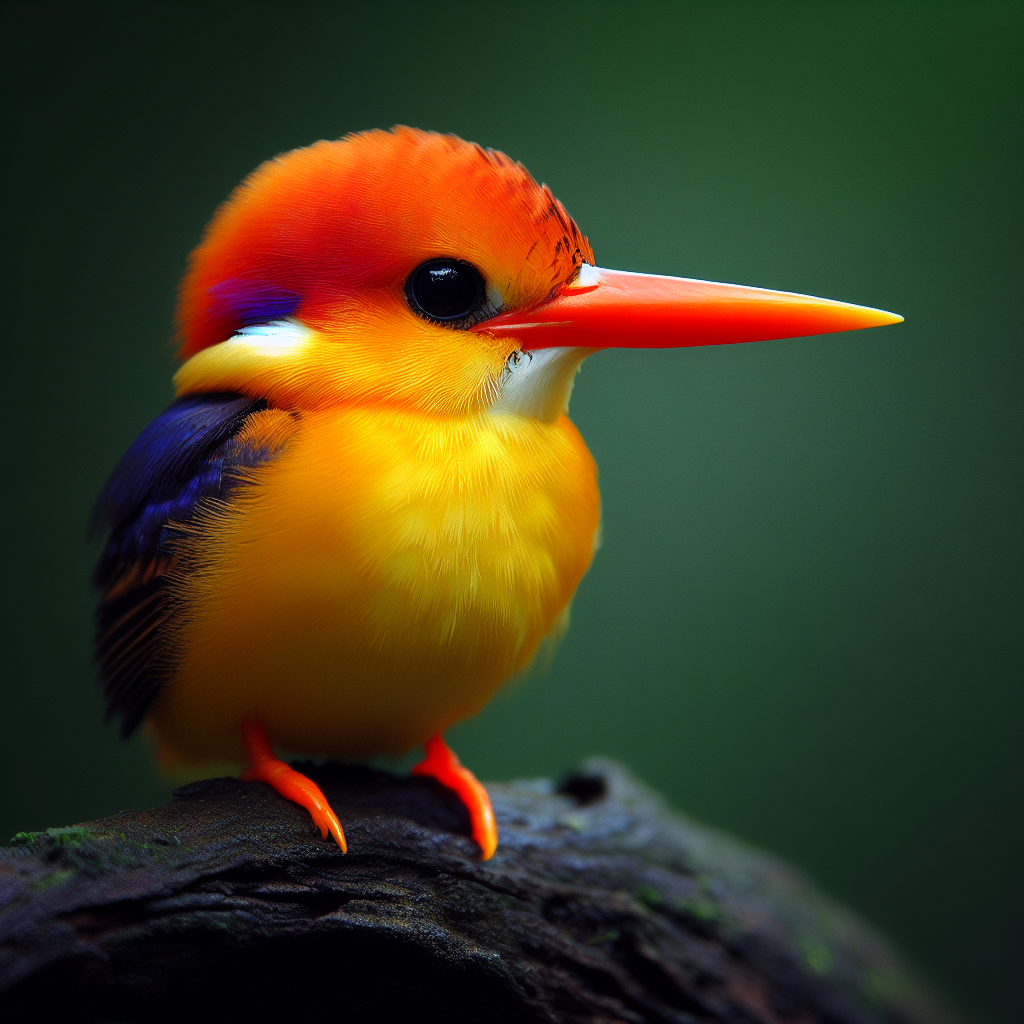Most beautiful small birds - Sykalo Eugen 2024
Oriental Dwarf Kingfisher (Ceyx erithaca)
Identification:
- Species name: Oriental Dwarf Kingfisher (formerly part of the "rufous-backed dwarf kingfisher" complex)
- Scientific name: Ceyx erithaca
- Family: Alcedinidae (Kingfishers)
- Order: Coraciiformes (Rollers, kingfishers, bee-eaters)
- Subclass: Neornithes (Modern birds)
- Class: Aves (Birds)
Description:
- Size: Tiny kingfisher, about 12.5-14 cm (4.9-5.5 in) long with a wingspan of 21-23 cm (8.3-9 in).
- Body shape: Compact and rounded, with a large head, a short neck, and a short tail.
- Plumage color:
Males: Brilliant turquoise head, neck, and upperparts, contrasting beautifully with their rich chestnut throat and chest. Vivid white wing patches flash on the inner wings during flight.
Females: Similar to males but duller overall, with less defined chestnut on the chest.
Massive, bright red beak, powerful and hooked.
Dark red legs.
Dark brown eyes.
Behavior:
- Method of feeding: Perches on exposed branches or wires, watching for prey (mostly fish, insects, and small reptiles) below. Dives into water or snatches prey from vegetation with lightning speed.
- Reproduction: Nests in tree cavities or burrows in banks. Lays 2-4 white eggs. Both parents care for the young.
- Movement: Resident in most of its range, with some local movements in response to food availability.
- Communication: High-pitched, piercing calls, often described as a laughing scream. Both males and females call.
Ecology:
- Habitat: Lowland and foothill forests, mangroves, rivers, streams, lakes, rice paddies, and open fields. Often found near water.
- Diet: Mainly fish, insects, small reptiles, frogs, and crustaceans.
- Hunting methods: Perches and scans for prey below, then dives with remarkable accuracy to catch it with its powerful beak. May also glean insects from leaves or hunt them in mid-air.
Distribution: Found in India, Bangladesh, Sri Lanka, southern China, and Southeast Asia.

The Oriental Dwarf Kingfisher, a feathered jewel flashing through Southeast Asian forests, might seem like a simple resident of shady streams at first glance. But beneath its turquoise plumage and piercing gaze lies a treasure trove of surprising facts and adaptations that will transform this forest sentinel into a captivating avian acrobat, hidden feast master, and unexpected socialite in your eyes.
Masters of the Perch-and-Pounce: Forget clumsy hops; Dwarf Kingfishers reign supreme in the domain of leafy branches and moss-covered stones. Their powerful legs and lightning-fast reflexes propel them into action with breathtaking speed, darting from perch to perch and leaping onto unsuspecting prey like feathered ninjas on miniature trampolines. Imagine them as forest ballerinas with built-in miniature jetpacks and an insatiable hunger for tiny treasures.
Hidden Feasting Technique: Don't underestimate their hunting prowess! Dwarf Kingfishers are expert insectivores and aquatic predators, utilizing their long, dagger-like bills to spear damselflies, beetles, and even small fish from the water's surface. They hover, dive, and even walk on water lilies, transforming the forest streams into their personal buffets — talk about feathered spearfishers with built-in miniature harpoons and miniature scuba gear!
Singing with Sparkling Spirit: Their calls aren't just chirps and whistles. Dwarf Kingfishers possess a distinctive and varied repertoire, with clear, piercing whistles, intricate trills, and even a signature "ping-ping" duet call that echoes through the trees. Their voices ring out like feathered bellbirds, serenading the forest with their sparkling spirit and joyful camaraderie.
Unexpected Social Swingers: They're not just solitary hunters. Dwarf Kingfishers surprisingly have a strong social side, often joining loose flocks during non-breeding periods. They chase each other through the foliage in playful flurries, their turquoise flashes lighting up the undergrowth, and even participate in synchronized aerial dives, painting the sky with fleeting patterns of blue and green. Imagine them as feathered skydivers with built-in miniature parachutes and synchronized dance routines.
Champions of Camouflage: They're not always visible jewels. Dwarf Kingfishers have mastered the art of blending in with their surroundings, their turquoise plumage mimicking the dappled sunlight on leaves and their stillness mirroring the mossy stones. This feathered chameleon, with its built-in miniature cloaking device, becomes almost invisible amidst the vibrant greens of the forest floor.
Cultural Charmers: In Southeast Asian cultures, the Dwarf Kingfisher is associated with good luck, beauty, and the vibrant spirit of the rainforests. Its dazzling plumage and lively calls inspire awe and respect, making it a treasured symbol of the region's lush landscapes and enduring spirit.
Unexpected Regional Variations: Did you know? Not all Dwarf Kingfishers are the same! Different populations across Southeast Asia boast subtle variations in plumage color and call patterns, adding a touch of feathered diversity to this adaptable species.